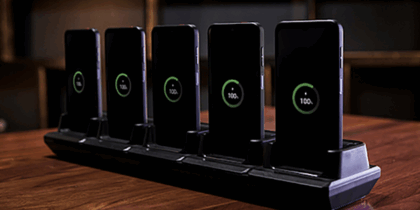The Internet of Things (IoT) promises to transform the way organizations operate, creating a digital government that’s more effective and efficient. By using the IoT to collect, analyze and leverage data from sensors, wearable technology and mobile devices, government agencies can streamline and optimize everything from citizen-facing services to law-enforcement responses to military engagements. Fortunately, government organizations are embracing the IoT, investing in a wide spectrum of hardware, software and services to ensure they’re taking full advantage of this latest tech trend.
A recent Frost & Sullivan survey of almost 200 IT decision makers in the government sector reveals that while almost 15 percent are still in a “watching and learning” phase, many more are in the process of deploying and testing the IoT in their agencies. Fifteen percent of organizations have internal deployments; 12 percent have trials in place; 11 percent are testing proofs of concept; 10 percent are involved in large-scale trials; and another 10 percent are extending their initiatives to customers and partners. Most impressively, almost 11 percent are already deploying next-generation solutions, and nearly 10 percent say that the IoT is already embedded into their key products and services.
When they deploy or evaluate the IoT, government IT decision makers say they’re driven to automate business processes, collect customer usage data, improve employee safety, optimize field or on-site operations, and lower the costs of fleet management.
IoT Aligns With Government Initiatives
On a higher level, the IoT aligns with the goals of many governments as well. By far, the biggest driver of IT investment among government organizations is a desire to improve productivity (top-ranked by 22.4 percent of respondents), followed by reducing operating costs (16.2 percent), attracting and retaining employees (14.7 percent), and boosting innovation and creativity (11.4 percent). In the future, agencies expect to turn their attention to improving the customer experience and collaboration. Because it lets users make decisions in real time based on actionable, valuable information, the IoT can positively impact all of these government initiatives and more.
Of course, no tech investment happens in a vacuum, and the IoT is no different. Survey respondents list aligning IT with business strategies and automating and streamlining business processes among their top tech challenges. However, their biggest concern is security, which comes into play as more businesses start to utilize the IoT. Consequently, as organizations plan for and deploy their IoT initiatives, they’ll be looking for solutions that can support their need for robust security. Network stability and compliance with regulatory requirements are also top of mind for these buyers.
Considering these results, it’s no surprise that government organizations allocate, on average, 7.3 percent of their overall IT budget to the IoT today — and they’ll likely increase that by close to 10 percent in the year to come.
The Internet of Things has the power to transform all aspects of businesses by allowing organizations to leverage data in new ways and streamline employee operations. Find out how the IoT can transform your organization or business.








